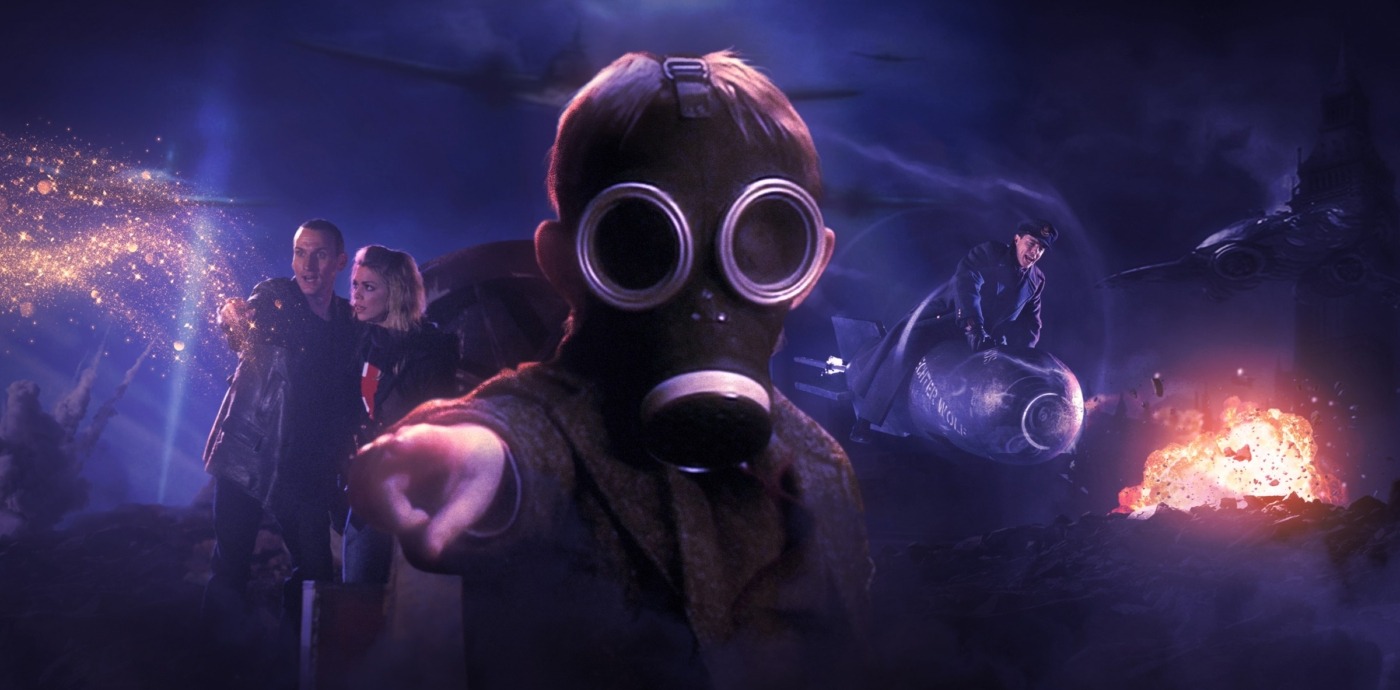The Perfect Episode: ‘Dr Who’ The Empty Child
The words “are you my mummy” will most likely trigger any Whovian’s fight or flight. A deceptively simple call evokes images of gas masks, soulless children, and war. ‘The Empty Child’ is a Dr Who episode like no other providing a glimpse of an alternate Dr Who that never came to be. The episode – which first aired in 2007 – was written by Stephen Moffat (Sherlock, Dracula) and directed by James Hawes (Merlin, Black Mirror). It stars ‘Ninth Doctor’ Christopher Ecclestone as The Doctor and Billie Piper as his brave assistant Rose as they time travel back to World War Two. Together, they uncover the mystery of a mysterious gas-mask clad child who can only repeat the same peculiar question: “are you my mummy?”.
The result is an unsettling and disturbing figure that our brains are unable to process as either cartoon or human…
What makes ‘The Empty Child’ so masterful is the balance it strikes between the fun, exciting Dr Who that appeals to children and a more mature, more suspenseful version of Dr Who that appeals to adults. Its subtle use of special effects also makes it more suspenseful and disturbing. The result is a stark change from the paper-mache Daleks and spray-painted laser guns for which Dr Who is infamous. The horror is evoked by something more real – a child. The figure of the empty child also plays into what is known as the ‘uncanny valley’, a state in which something or someone is similar enough to a human and not similar enough to a cartoon. The result is an unsettling and disturbing figure that our brains are unable to process as either cartoon or human, and the image of a child with a gas mask welded onto his skin does just that.
‘The Empty Child’ is a sonic experience as much as it is a visual one.
There is a particularly terrifying scene during the episode where The Doctor and Rose take refuge in an empty house during an air raid. With sirens ringing in the background, phones start ringing, invisible hands write on typewriters, and a child appears at the front door, all of which repeat the same haunting sentence: “are you my mummy?”. And even though the vast majority of viewers nowadays have not experienced World War Two, the unmistakable sound of an air raid siren is still enough to evoke a sense of fear. And paired with the fast-paced, repetitive sounds of everything going on around the characters, ‘The Empty Child’ is a sonic experience as much as it is a visual one.
I remember watching this scene for the first time as a child, my heart pumping pure adrenaline as I clutched my blanket for comfort. It was exhilaratingly scary then and having rewatched it recently, I can confirm it is still scary now.
While ‘The Empty Child’ was ground-breaking and different in many ways, the essence of Dr Who is still there. The origin of the gas-masked children has a simple, fictitious explanation. The TARDIS is still present in all its cheesy sci-fi glory, and the episode contains a quintessentially Whovian scene where Rose slow dances with the impossibly perfect Captain Jack Harness on a spaceship in front of the Big Ben – during an air raid. ‘The Empty Child’ is, at its core, classic Dr Who.
While artificial Daleks and Cybermen feel foreign and (literally and metaphorically) alien, something like statues or WW2 feel a lot more ‘real’, and consequently, scarier.
It is tragic that the creators of Dr Who decided to revert to using cheap plastic monsters after the airing of ‘The Empty Child’, leaving the audience with a painful glimpse of what could have been. However, not all hope was lost. In what is arguably the most famous Dr Who episode: ‘Don’t Blink’, (David Tennant), the creators decided to return to the use of the ‘uncanny valley’ through the use of statues that move toward you when you face away from them. Like ‘The Empty Child’, ‘Don’t Blink; provided a glimpse of an alternative and vastly superior Dr Who that appealed to people of all ages – not just children or young adults. And perhaps the reason these episodes have stayed with us the most is because of their familiar settings and themes. While artificial Daleks and Cybermen feel foreign and (literally and metaphorically) alien, something like statues or WW2 feel a lot more ‘real’, and consequently, scarier.
Why the producers of Dr Who refused to venture further into the pseudo-human horror of the uncanny valley is unclear. Perhaps they thought it would be too scary for children or young adults who are, in essence, Dr Who’s target audience. Or perhaps they thought it would grow stale, much like how tin-foil cybermen – or robots in general – have throughout the show’s run. In the words of the ninth doctor himself, I believe ‘The Empty Child’ to be ‘fantastic!’


Comments (1)
Interesting review.